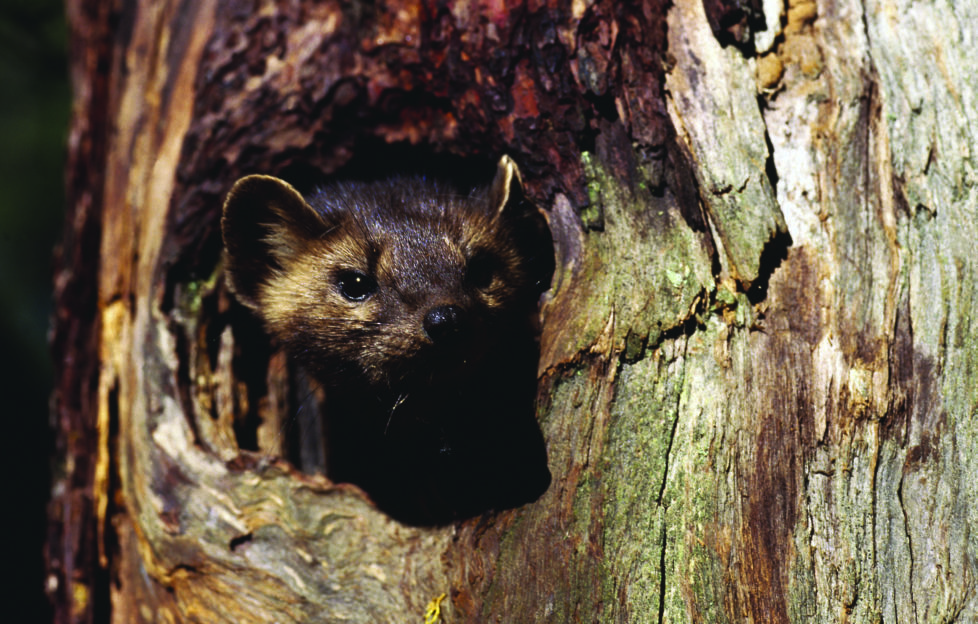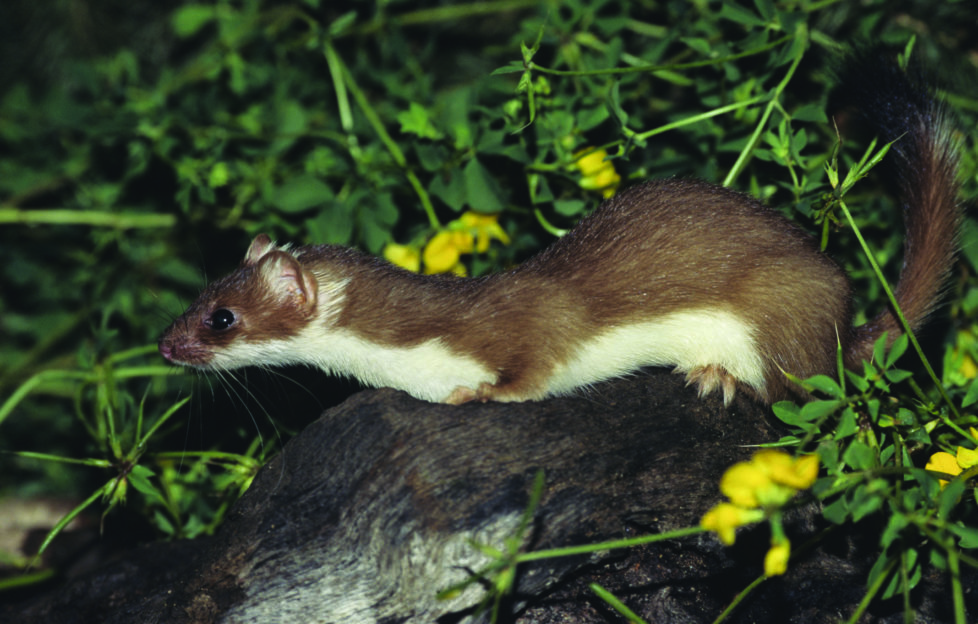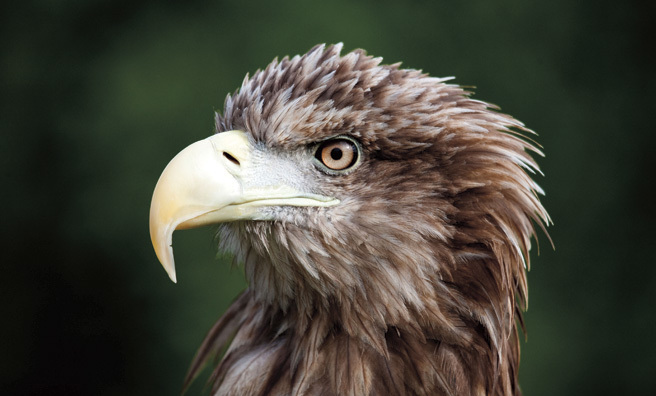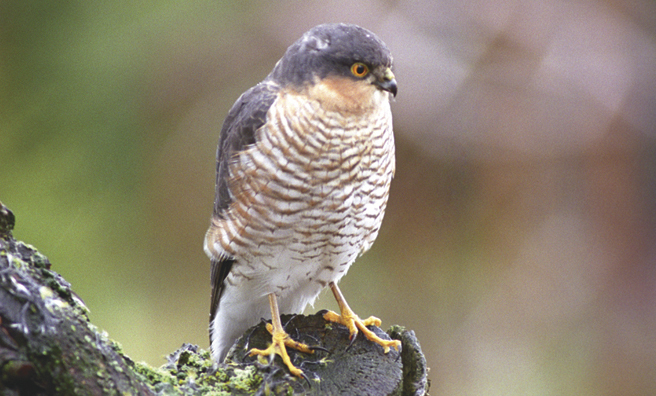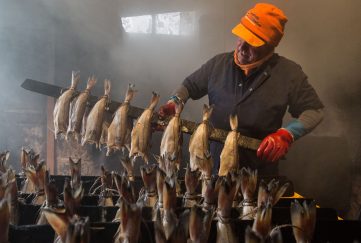The Fearlessness of Weasels
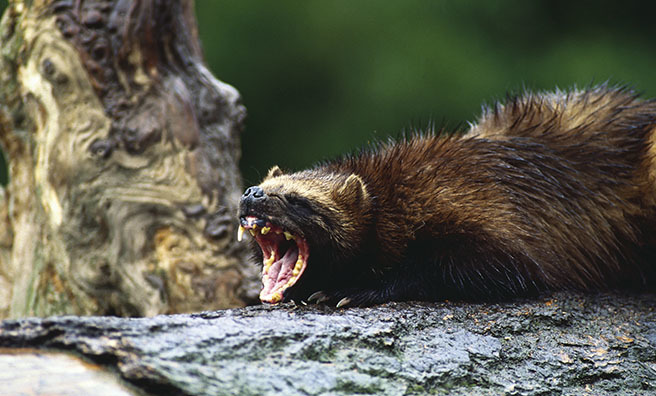
A weasel fears no-one – not even Jim Crumley
There is a scruffy little country lane I walk down from time to time, knowing that I’m safe from all forms of wheeled transport other than tractors, and their reverberating growl is audible half a mile away so I hear them coming.
At one point, the lane dives into a tousie, dark wood, almost as if it is ashamed of its own scruffiness, as well it might be, but it has always had one saving grace. And now I know it has two.
The one I knew about before is that the wood accommodates a badger sett. Many of its 40 or 50 entrances are very close to the wood’s roadside fence, and here and there the badgers have dug under the fence and come up in the roadside verge.
I have never seen them use the roadside holes although it’s clear from scrapings and rearranged fence wires on the other side of the road that they do cross to forage in that half of the wood and in the rough field beyond.
A nature watcher’s sixth sense
A well-honed sixth sense is among the most priceless of assets to a nature watcher. The honing is the fruit of years of patience, of ritual, of reworking a particular set of circumstances again and again and again, so that if something changes you sense it as readily as you might see or hear or touch or smell it or taste it on the wind.
I was walking towards the wood, thinking about badgers, when it occurred to me that almost all the badger cubs I have ever seen have been in daylight and well away from the core of the sett. So instead of going into the wood (there is a landmark that signposts an old gap in the fence – a broken sink), I went looking for the entrances to the under-the-fence tunnels on the roadside verge.
Two I remembered were overgrown and unused. But there were also two I had not remembered, and these looked freshly dug, and there at the edge of the second one were some very small footprints indeed – and too small for a badger. Besides, whatever the size of the badger, from venerable boar to weeks-old cub, a badger footprint looks like a badger footprint and these did not.
An imposter in the sett
They belonged to what I now know to be the wood’s second saving grace. I thought: “These look like…” and the thought remained unfinished because the face of their owner appeared in the mouth of the tunnel, saw me and vanished.
I crossed the narrow lane away from the hole, stepped over the waist-high fence on the far side, stood next to a tree and waited. I waited because I had good reason to believe that the face would be back. I glanced at my watch, wondering how long it might take. I guessed: three minutes maximum.
It took a minute and a half. I saw some white fur first then made out the two blackest eyes in the wildwood. These advanced none-too-cautiously into the daylight.
I whistled, clicked my tongue and made kissing noises. The creature advanced a yard out into the lane, stopped, stood on its hind legs and stared. Pound for pound, or in this case ounce for ounce, is there anything more fearless on earth than a weasel?
Its coat shone in a dapple of sunlight. It was sleek and skinny and it moved in wavelet ripples. It stood again and showed its teeth. But mostly it stared its black unblinking stare.
The most un-deferential beast on four legs
I thought of it then as the most dynamic of all our native mammals, the most packed with purpose and energy, the blithest and most effortless athlete, the most confident in its own skin and the most un-deferential beast on four legs this side of…this side of…this side of nothing at all, really.
It is also the nosiest creature in the wild wood, which is both part of its charm and from time to time the source of its downfall. For if I had been a keeper with a gun, or whatever it is a keeper uses these days to deal with weasels, that nosiness would have been a death sentence.
As it was, I chatted away to it and watched it come to within six feet of where I stood, sizing me up (its six inches nose to tail against my all-but-six-feet), obsessively determined to satisfy itself about the source of the noises and, if necessary, see it off.
Whatever you think of weasels, they are among the most miraculous little creatures you will ever see, and why anyone would want to kill one… but we’ve been through that before, haven’t we?
How close it might have come I don’t know, but suddenly the ground began to shake and a tractor the size of a farmhouse rounded the end of the wood and charged up the lane towing a piece of outlandish machinery whose purpose quite baffled me.
When it had been and gone there was just an empty lane, a drifting smell of diesel, and a thread of new footprints that disappeared deep into the hole.
I have heard of all kinds of creatures sharing a badger sett with the badgers, and seen some of them – fox, rabbit, once a hare in a storm and once an otter – but I had not seen or heard of a weasel lodger.
“A 2 – 4 oz mustelid delivering a thousand volts…”
Ernest Neal, immortal world authority on badgers, had heard of it, but only on a very casual and temporary basis. His Europe-wide list of “mammalian tenants of setts” in his definitive book, The Natural History of Badgers, includes not just rabbit and fox but wolf, porcupine, racoon dog, pine marten, polecat and wildcat.
So the weasel is in tow with some fairly uncompromising company, especially when you add the badger itself into the equation.
Mind you, it has the reputation to match. David Stephen, a Scottish naturalist of distinction and a bit of a specialist in the weasel tribe, wrote of it thus:
“…a mighty atom – a bantam sable, a mink in miniature, a 2-4oz mustelid delivering a thousand volts, a fire-cracker in brown topcoat and white waistcoat who can put the fear of death in many a grown man…”
John Buchan, who knew his way around the flora and fauna of the land, reached for this mighty atom to portray the mindset of his character Fish Benjie in John Macnab: “…Benjie fought in no orthodox way, but like a weasel, using every weapon of tooth and claw, but in his sobbing furies he was unconquerable, and was soon left in peace.”
A breaking wave of terror
I borrowed from the stillness of the tree where I leaned, I was tree-coloured in my clothing and although I dare say I did not smell like one it seemed the stillness was enough, for in five minutes the weasel was back, lingered in the entrance for about ten seconds then advanced into the sunlight…followed by eight more weasels, which was presumably the whole family.
They flowed along the lane in goose formation, a rippling ground-level skein of tawny and white, a breaking wave of terror in the collective awareness of the mice and vole population of that place, and everything else up to and including the rabbits.
Once, and only once, I saw a weasel take on a rabbit, not fully grown but not small, and I would guess it was a pound in weight to the weasel’s two or three ounces.You have doubtless heard of the weasel’s capacity to almost hypnotise a rabbit into stillness before it strikes. This one used ambush as its preferred technique.
The rabbit was feeding on grass near a stand of nettles. The weasel was hidden in the nettles and charged from about a yard away, leapt for the throat and hung on. The rabbit died slowly and struggling violently, but the weasel hung and hung. Then it contrived to drag the rabbit into the nettles, and few things that I have seen in nature have been quite so impressive, quite so ruthless, quite so stunningly efficient.
So, there is a scruffy little country lane I know, and it has a dark wood with a badger sett, and from time to time, the tenants from hell move in.
More from Jim . . .
A great nature lover and observer, Jim Crumley has written for the Scots Magazine for many years. Here are some of our favourite pieces from his archives:


